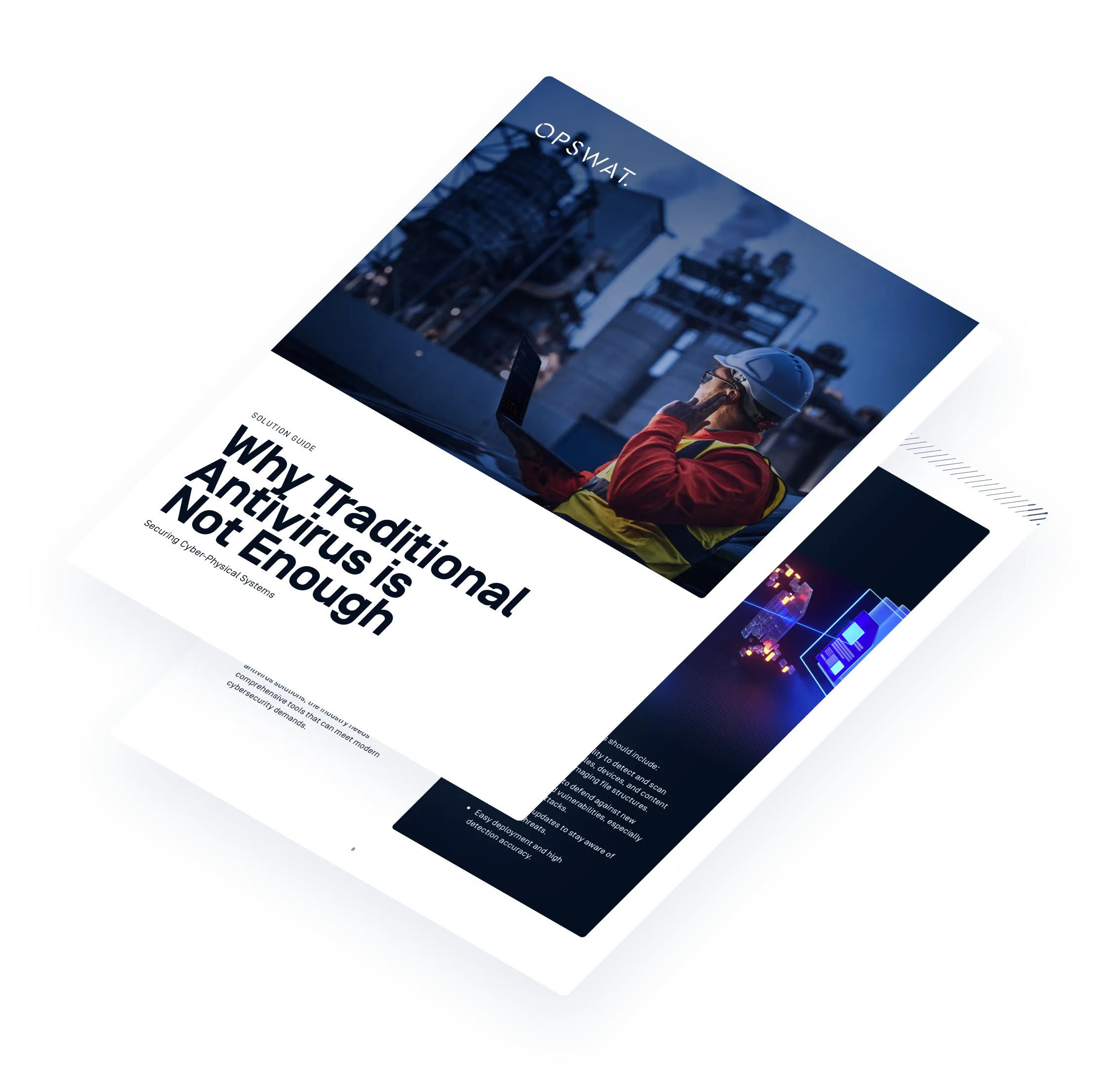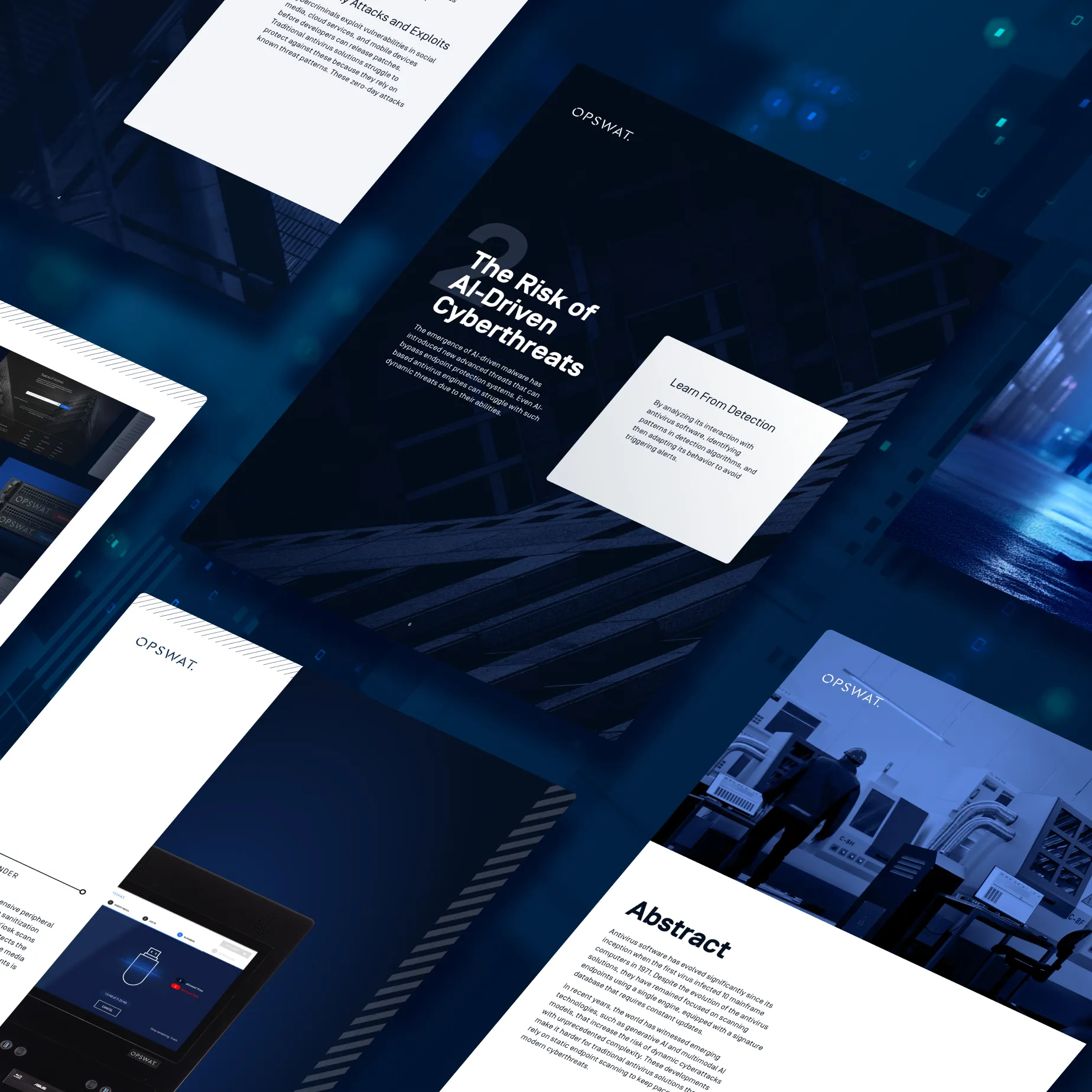
Why Traditional Antivirus is Not Enough
Traditional antivirus solutions, with their reactive nature, are no longer capable of protecting critical infrastructure and OT environments against modern cyberthreats. More proactive and multi-layered solutions are required to detect and neutralize known, unknown, and AI-generated threats.
In this solution guide, discover how industry-leading solutions and technologies offer the future-proof protection that traditional antivirus can no longer provide.
Traditional AV Solutions Struggle to Keep Up
Traditional antivirus software is no longer sufficient to protect against modern cyberthreats. With an average malware detection rate of ~45.4%, single-engine antivirus solutions can’t keep up, especially with the evolution of AI-based technologies and the emergence of AI-driven malware.

Why is AI-Driven Malware Difficult to Detect?
- Analyzes and Learns from Detection Algorithms
- Generates Harder to Detect Novel Variants
- Evades Behavioral Analysis

What You Will Learn
To build a multi-layered defense-in-depth strategy for critical infrastructure and OT environments, and to defend against known, unknown, and AI-generated threats, you will learn about solutions and technologies capable of:
Increasing malware detection rates to up to 99.2%
Protecting against zero-day vulnerabilities by analyzing, sanitizing, and rebuilding file structures
Detecting and stopping sensitive and confidential data exploits
Helping with regulatory compliance by detecting which country files originated from
Detecting application vulnerabilities before installation
Protect Critical Infrastructure Against Modern Threats
Download our latest solution guide to learn how to mitigate the risks of modern cyberthreats, including AI-driven malware, zero-day exploits, and data breaches, and to implement a multi-layered defense-in-depth strategy.
